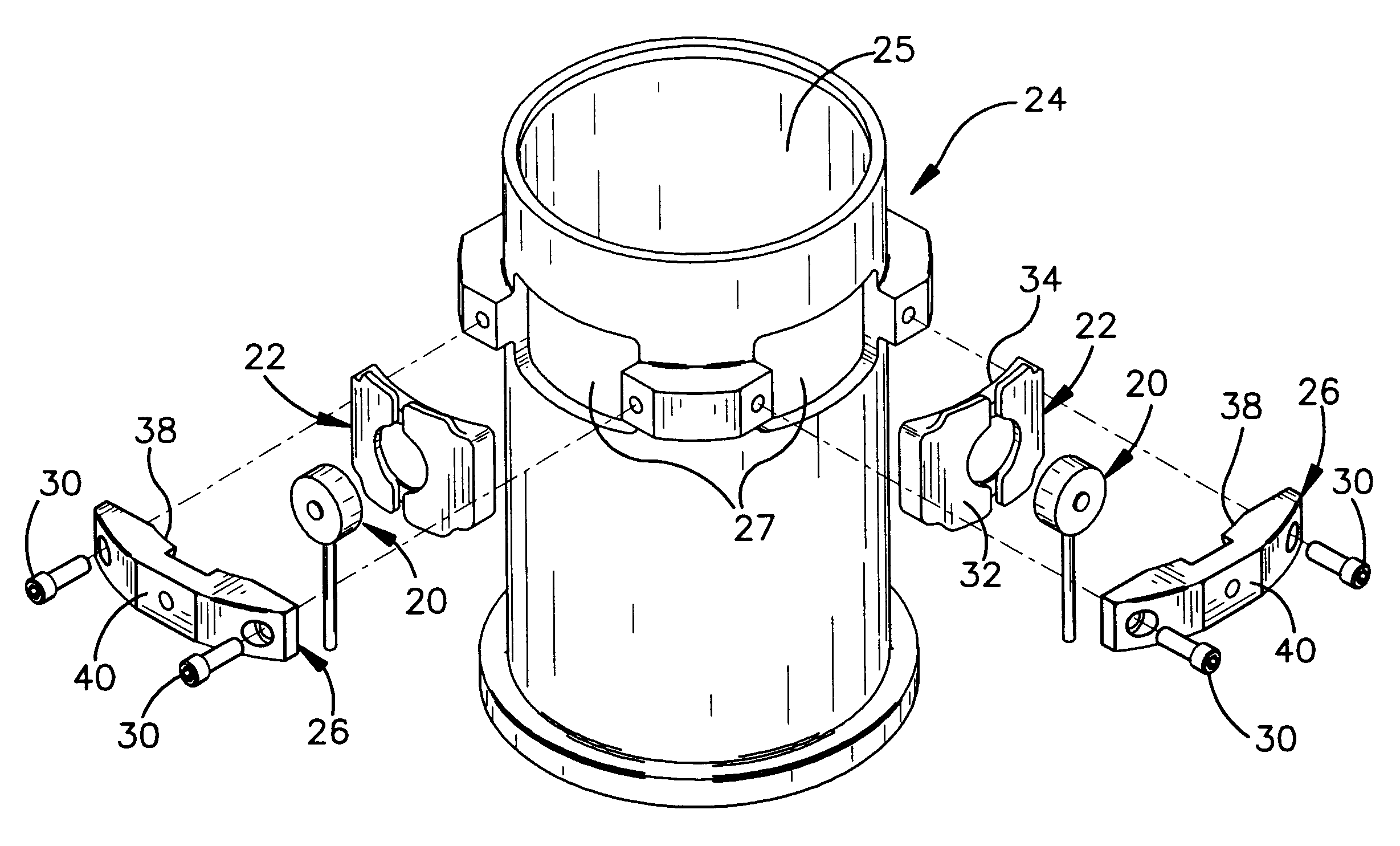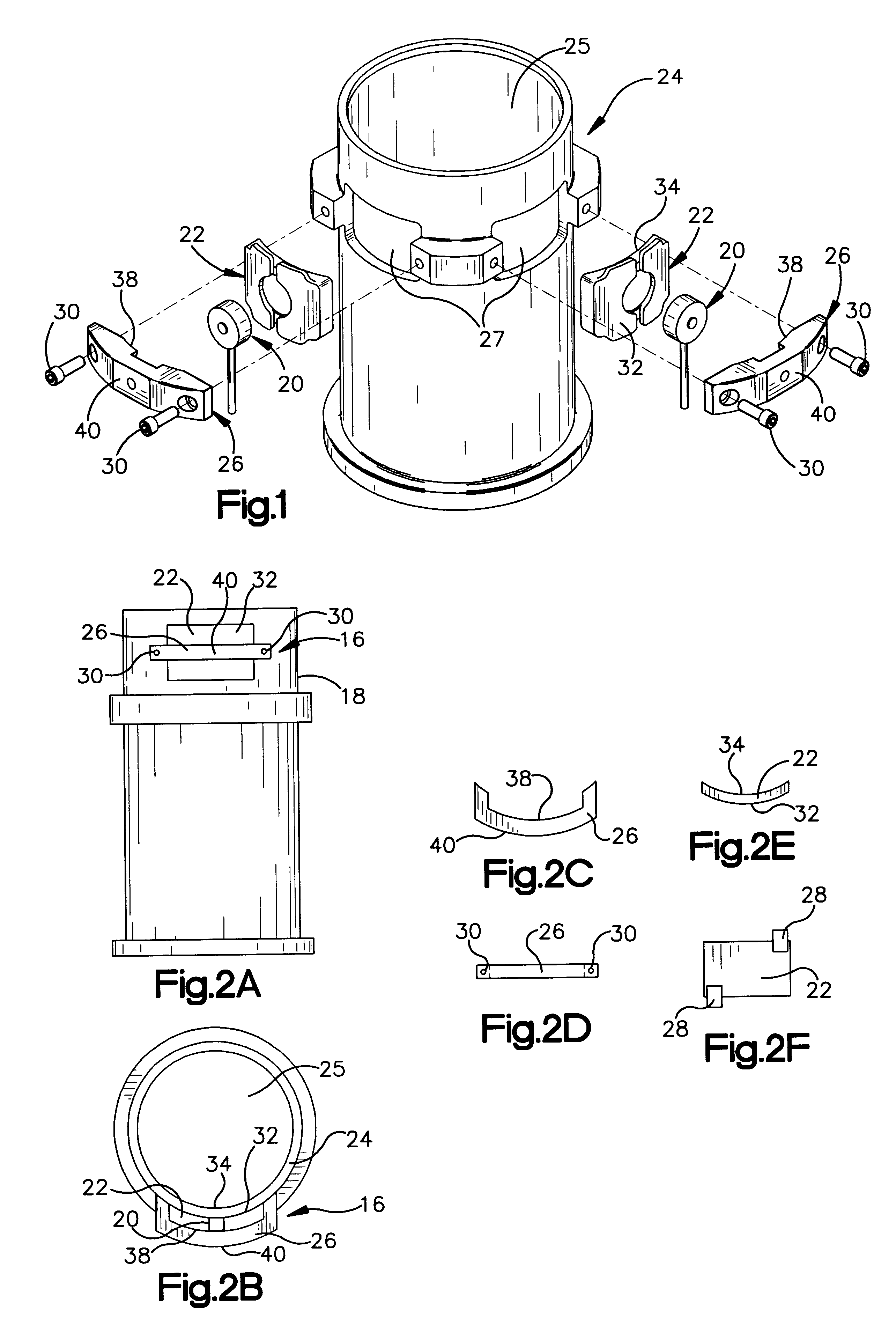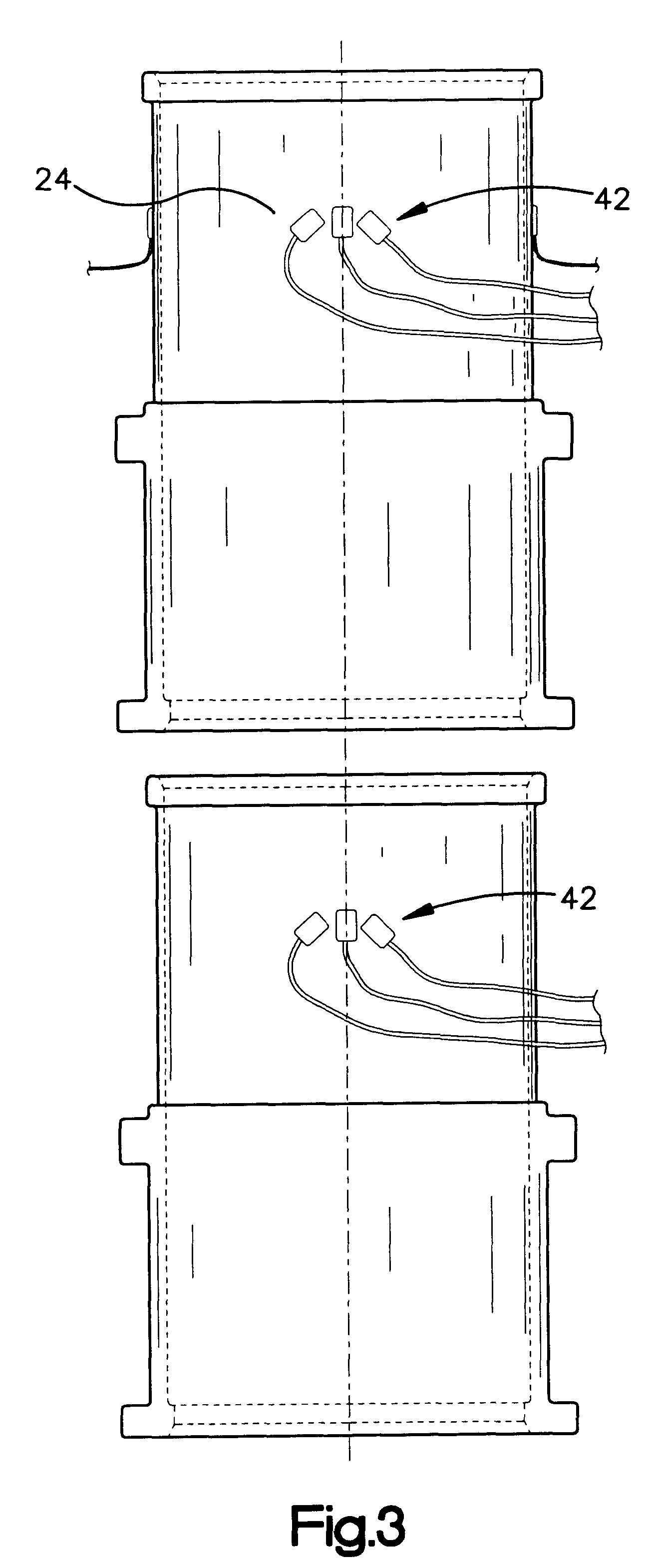Instrumented mold for use in material testing equipment for measurement of material properties
a technology of material properties and instruments, which is applied in the direction of instruments, measurement devices, scientific instruments, etc., can solve the problems of not being able to predict the rutting potential of asphalt mixes in a way, unable to account for lateral forces, and difficult to detect or measure the forces exerted by materials in multiple dimensions or directions
- Summary
- Abstract
- Description
- Claims
- Application Information
AI Technical Summary
Benefits of technology
Problems solved by technology
Method used
Image
Examples
Embodiment Construction
A simple way of measuring the shear strength in a composite material is through the measurement of lateral pressure that is generated due to a vertical pressure. For example, a solid block of steel, loaded below its crushing strength, would develop almost negligible lateral pressure under a vertical stress, whereas in a mass of water, with no shear strength, the lateral pressure that is developed due to a vertical pressure is equal to the vertical pressure. The example of these two extreme cases illustrate that for a material which lies, in material properties, somewhere between a solid block of steel and mass of water, the higher the lateral pressure due to a vertical pressure, the lower the shear strength of the material.
In soil mechanics, it is well known that a soil with rounded aggregates would result in a low angle of internal friction (.phi.), and hence a low shear strength. From the concepts of lateral pressure developed in soil (as applied to retaining walls, for example), ...
PUM
| Property | Measurement | Unit |
|---|---|---|
| size | aaaaa | aaaaa |
| size | aaaaa | aaaaa |
| reactive forces | aaaaa | aaaaa |
Abstract
Description
Claims
Application Information
 Login to View More
Login to View More - R&D
- Intellectual Property
- Life Sciences
- Materials
- Tech Scout
- Unparalleled Data Quality
- Higher Quality Content
- 60% Fewer Hallucinations
Browse by: Latest US Patents, China's latest patents, Technical Efficacy Thesaurus, Application Domain, Technology Topic, Popular Technical Reports.
© 2025 PatSnap. All rights reserved.Legal|Privacy policy|Modern Slavery Act Transparency Statement|Sitemap|About US| Contact US: help@patsnap.com



